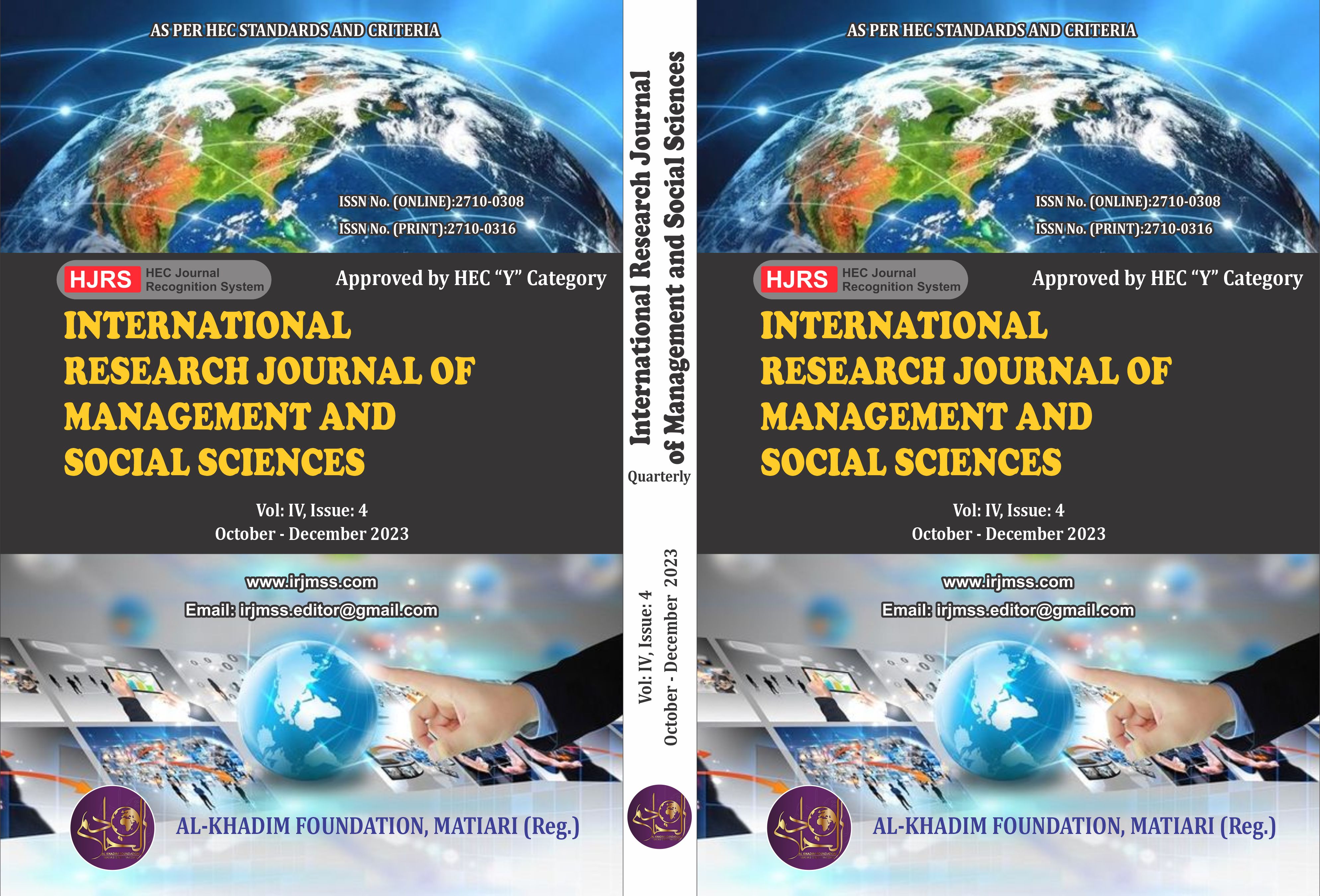The Role of Linguistic Knowledge in the Treatment of Speech and Language Disorders
Keywords:
Linguistic knowledge, Language disorders, Speech-Language PathologistsAbstract
Language serves as the foundation for linguistics and speech-language pathology (SLP), and there is enormous potential for knowledge exchange between these two fields. In developed nations like US, UK, and Australia, where studies have shown that professionals employ linguistics-related resources to treat speech and language disorders, the relevance of linguistic experts is widely accepted (Cummings, 2008; Ball & Muller, 2009; Bowen, 2011). However, it appears that research on cooperation between linguists or speech and language pathologists is not given enough attention in nations like Pakistan. The main aim of this research was to determine the significance of linguistic knowledge in the treatment of speech-language disorders. The data was collected from 39 SLPs(Speech Language Pathologists) using interview as an instrument. The interviews were conducted to evaluate the role of linguistic knowledge in the therapy of various speech & language disorders. Research findings revealed that the speech therapists reported to have taken linguistics courses and possess a good understanding of phonetics and phonology. Linguistics knowledge is beneficial when assessing disordered speech and language since abnormal speech is measured and judged using linguistic parameters. The findings of current research also suggest that SLP modules in Pakistan should additionally cover Urdu linguistics. Speech or language therapy should, therefore, involve thorough instruction on Urdu pronunciations, especially vowels and consonants.
References
Badar, F. & Mumtaz, N. ( 2015). Current Clinical Problem Solving Approaches among Pakistani Speech and Language Therapists. International Journal ofRehabilitation Sciences,4(2). Retrieved January, 20, 2016, from http://www.ijrs.org/wp-content/uploads/2016/02/43.pdf
Bailey, J. (2008). First steps in qualitative data analysis: Transcribing. FamilyPractice, 25(2), 127-131.
Ball, M. J., & Muller, N. (2009). Clinical Phonology. In L. Wei & V. Cook (Eds.),
Contemporary Applied Linguistics, 2: Linguistics for the Real World.
(pp.202222). London: Continuum International Pub. Group.
Ball, M. J., & Code, C. (1997). Instrumental clinical phonetics. Chichester: John Wiley
& Sons.
Berg, B. L. (2007). Qualitative research methods for the social sciences. London:
Pearson.
Boeree, D. G. (2004). Speech and the Brain. Retrieved May 04, 2016, from http://webspace.ship.edu/cgboer/speechbrain.html
Bowen, C. (2011). Structural analysis of a language sample. Retrieved February, 20,
2016, from http://www.speech-language-therapy.com
Brinton, L. J. (2000). The structure of modern English: A linguistic introduction.
Amsterdam: Benjamins.
Crystal, D. (1987). Speech Therapy: the linguistic foundation. Paper presented to Congres Scientifique International, ‗Orthophonie‘, Nice. Retrieved February, 24, 2016, from www.davidcrystal.com/?fileid=-3924
Cummings, L. (2008). Clinical linguistics. Edinburgh: Edinburgh University Press.
Dudek, K.L.(2103). Semantic Intervention Knowledge, Attitudes, and Practices among
School-Based Speech-Language Pathologists. Contemporary Issues in Communication Science and Disorders.(60), 69-84.
Fantini, A.E. (1989). Language and worldview. Journal of Bahá’íStudies, 2(2).
Hai-Jew, S. (2016, May 9). Some Types of Data Visualizations in NVivo. Retrieved June 10, 2016, from http://scalar.usc.edu/works/using-nvivo-an-unofficialand-unauthorized-primer/index
Hutchison, M. (1972). An Experiment in Applying Linguistics to Speech Therapy. International Journal of Language & Communication Disorders, 7(1), 49-53.
Koutsoftas, A.D. (2014).School-Age Language Development: Application of the Five Domains of Language across Four Modalities. In Singleton, N. C., & Shulman, B. B. (2014). Language development: Foundations, processes, and clinical applications (pp. 215-230) Burlington, MA: Jones & Bartlett Learning.
Perry, A.R. (2010). Cultural Competence in Speech-Language Pathology: A Review of Where We Are and Where We Go http://opensiuc.lib.siu.edu/cgi/viewcontent.cgi?article=1273&context=gs_rp
Perkins, M. (2013, May). When Language goes wrong: What clinical linguistics can do
for us. Babel: The Language Megazine, (3), 29-34.
Ravid, D., Bar-On, A. & Dattner, E. (2013). Linguistics in the service of communication Disorders: New frontiers. AILA Review, 26, 79–99.
Siddiqui, A. (2013). Establishing an Institute of Speech-Language Therapy inPakistan. Pakistan Journal of Medicine and Dentistry, 1(01), 70-79.
Saleem, A.M.,Kabir, H. ; Riaz, M.K.;Rafique, M.M.; Khalid, N.; Shahid, S.R.( April-May, 2002). Urdu Consonantal and Vocalic Sounds: CRULP Annual Student Report. Akbare-Urdu.Islamabad: National Language Authority.
Stork, F., &Widdowson, J. (1974). Learning about linguistics: An introductory
Workbook. London: Hutchinson
Wolter, J. A., & Green, L. (2013). Morphological Awareness Intervention in School Age Children with Language and Literacy Deficits. Topics in Language Disorders, 33(1), 27-41. Retrieved February 15, 2016,






